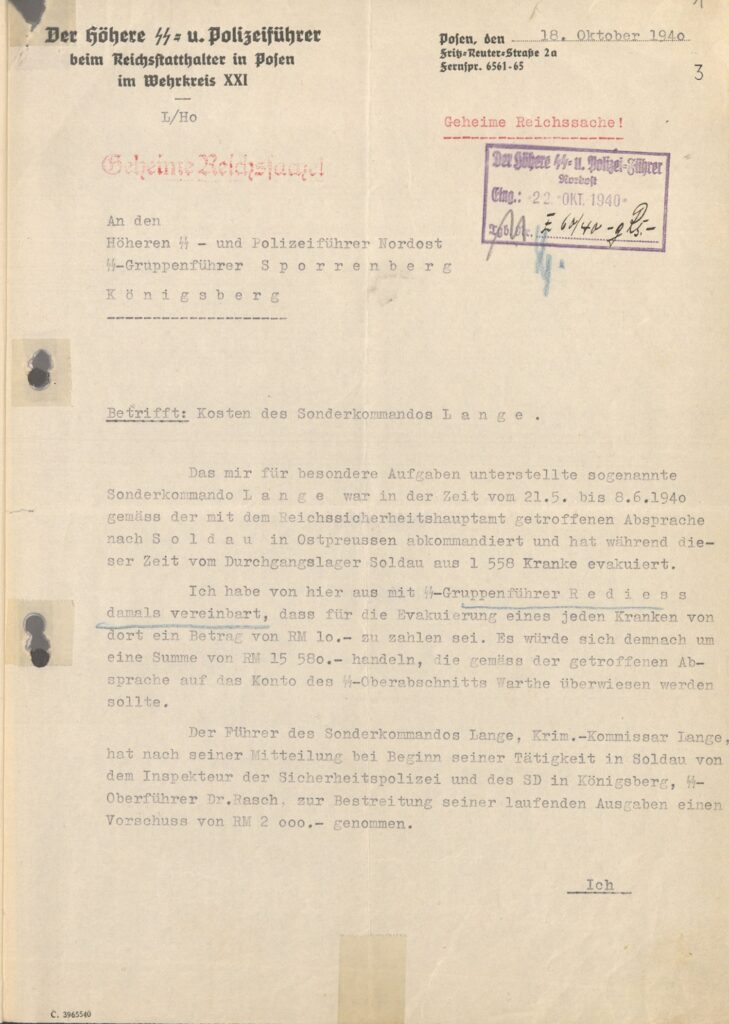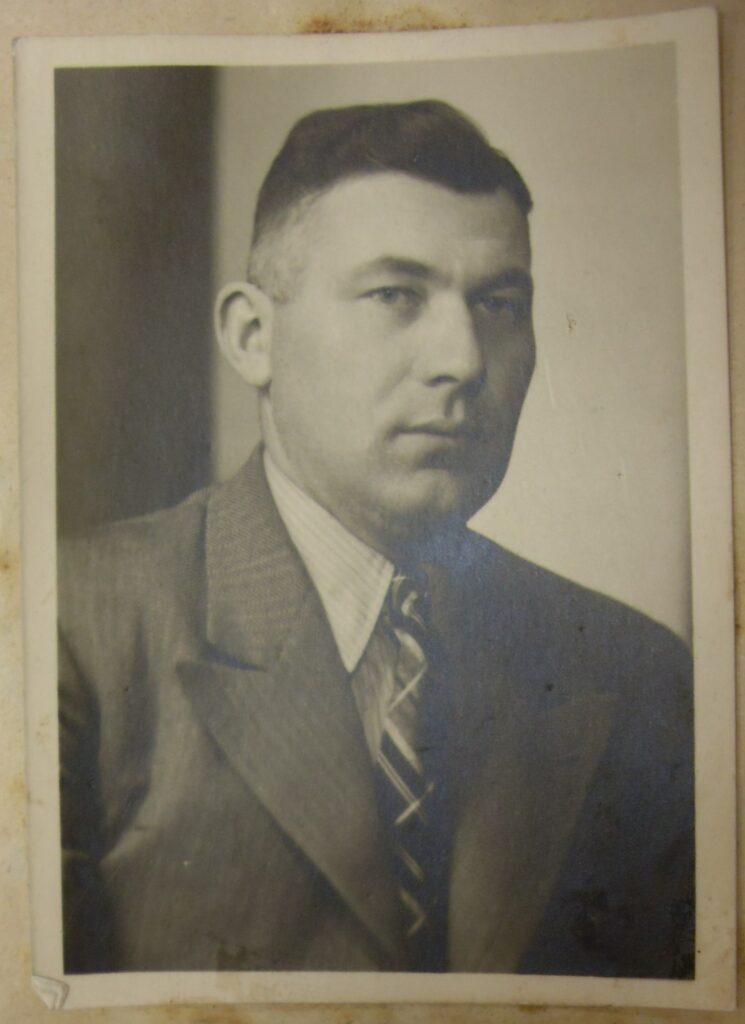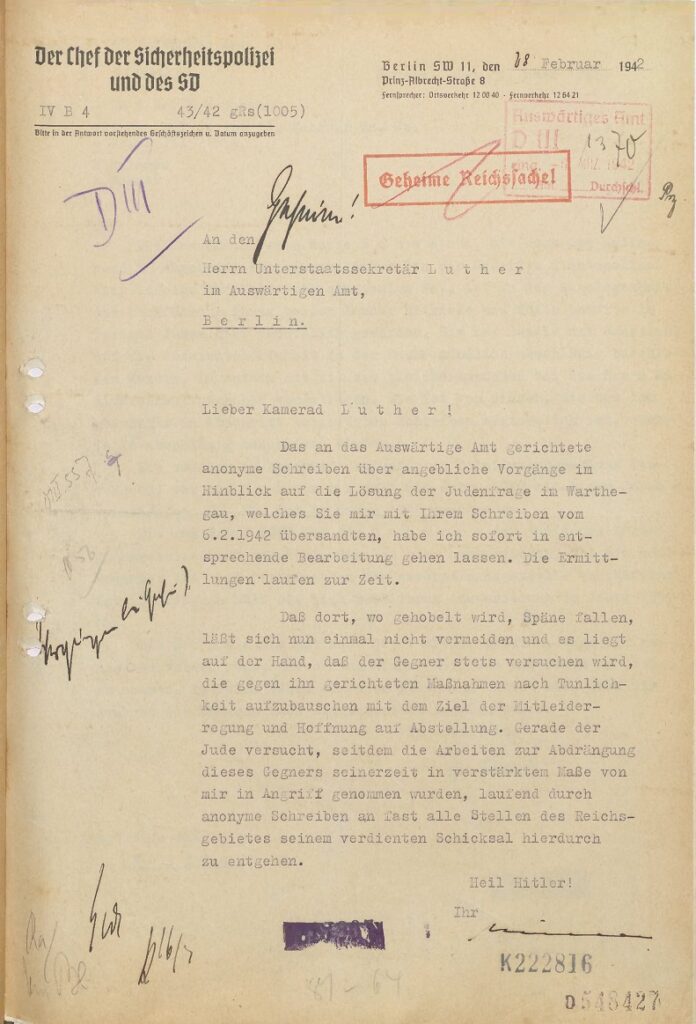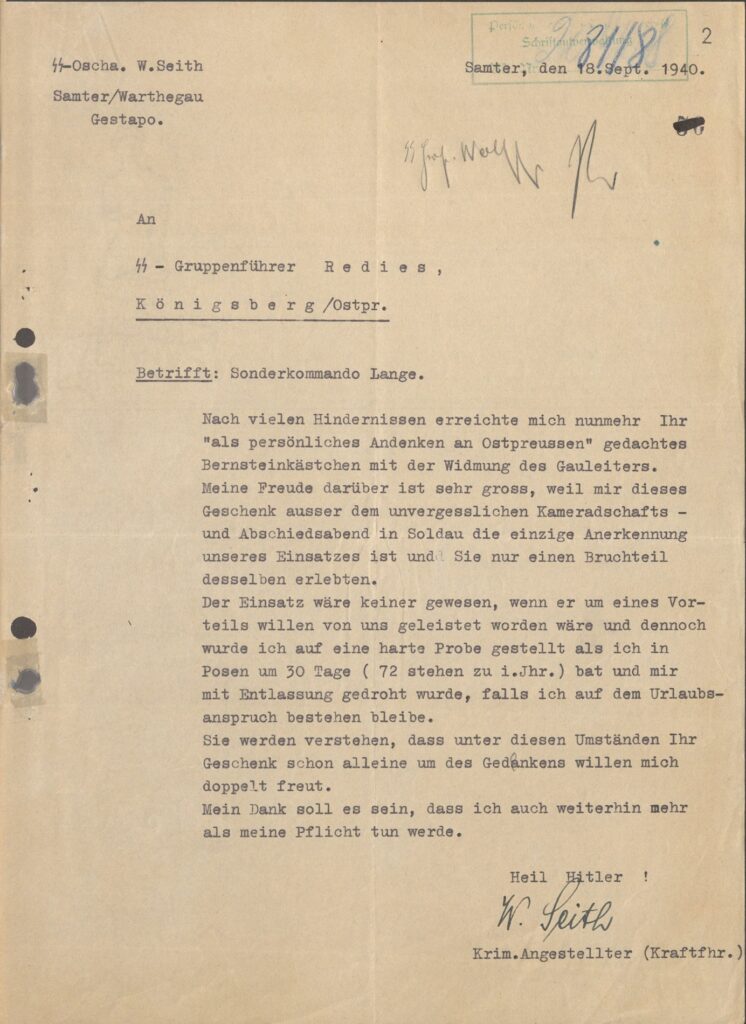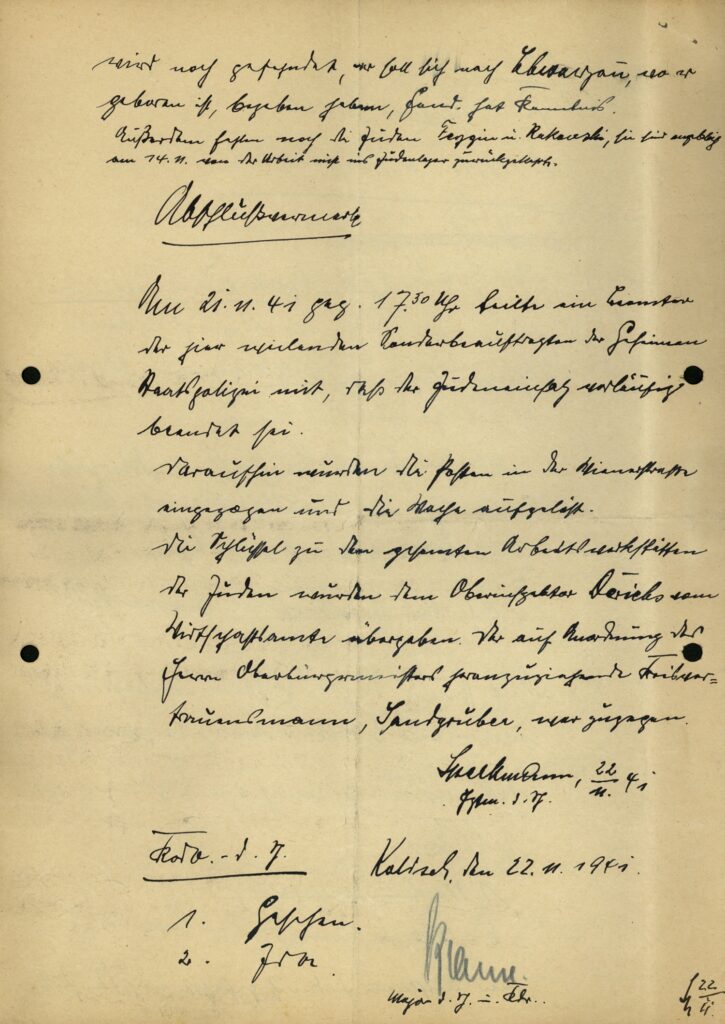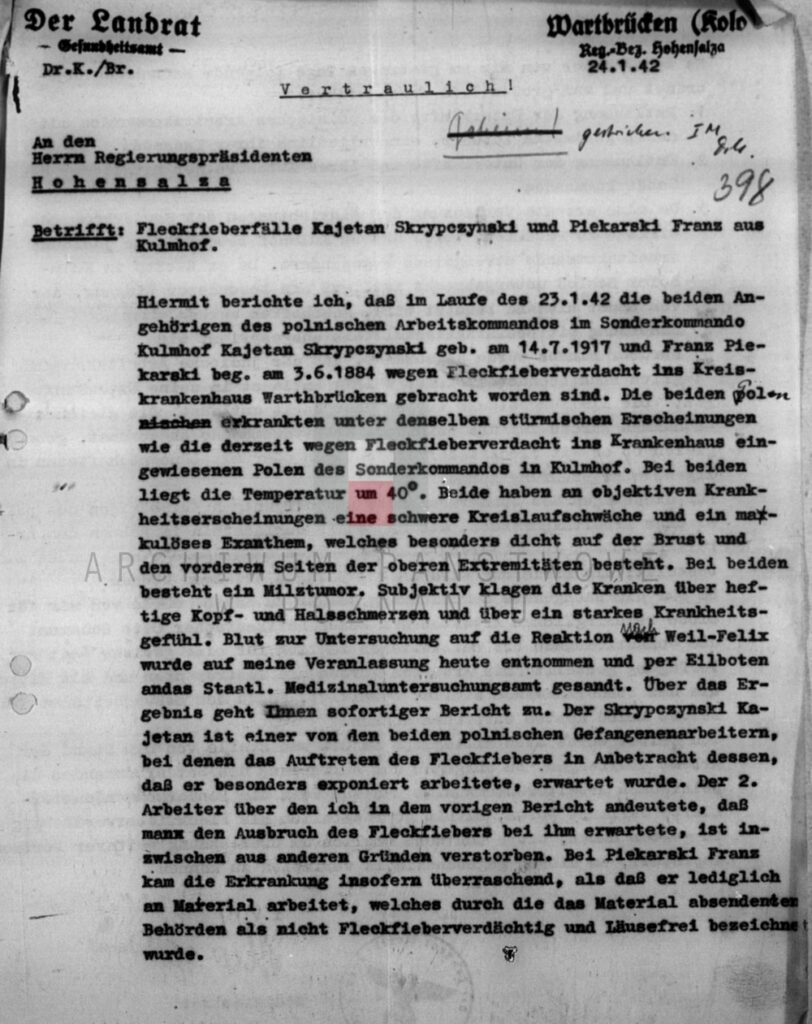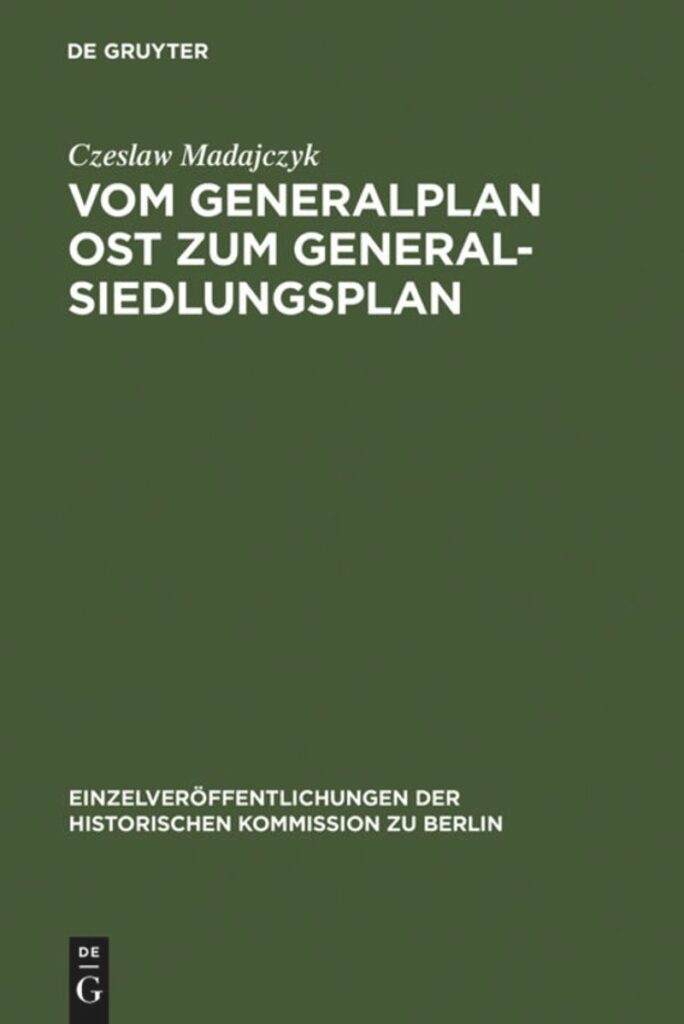1940-10-18 Letter from Koppe to Sporrenberg: “The so-called Sonderkommando Lange …evacuated 1,558 sick individuals from the transit camp in Soldau”
In the letter of 19 October, 1940, the Higher SS and Police Leader of the Warthegau, Wilhelm Koppe, disclosed to his counterpart in East Prussia, Jakob Sporrenberg, that “the so-called Sonderkommando Lange…evacuated 1,558 sick individuals from the transit camp in Soldau” in the period from May 21 to June 8, 1940. Koppe mentions that Sporrenberg’s predecessor, Wilhelm Rediess, had agreed “at that time that an amount of RM 10.- should be paid for the evacuation of each sick person”. At the beginning of the operation, the “leader of Sonderkommando Lange, Kriminalkommissar Lange, took an advance of RM 2,000.- from the Inspector of the Security Police and the SD in Königsberg”. Koppe requests from Sporrenberg the “transfer the remaining amount of RM 13,580”. The document provides insight into the administrative and logistical aspects of early Nazi extermination operations, particularly how they managed and funded the tasks involved SS and police units.
